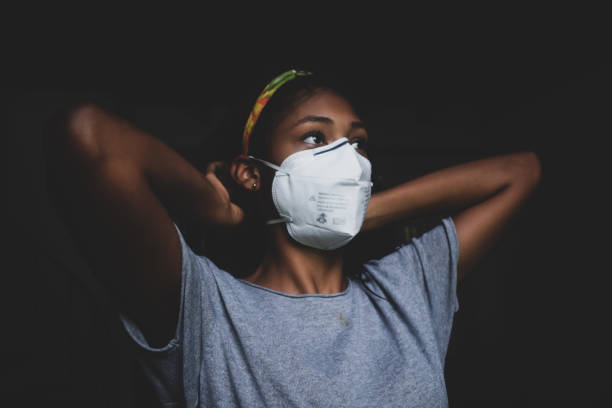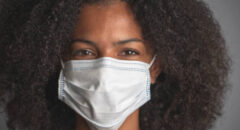
Mask-wearing has its costs and benefits. As we all know, they can slow the transmission of the COVID-19 virus, especially medical-grade masks (N95 or KN95) that are worn properly. However, they also impede human communication and have caused several questions about how they affect our long-term health. mask mandate
In short, wearing a mask long-term hasn’t been easy for everyone. A simple scroll through social media will lead you to several people proclaiming that wearing a mask is challenging for them whether they have asthma, another condition or simply can’t breathe. Masks are hard on young children, people with learning disabilities and people that are hard of hearing.
Talking with a mask on, as Kathleen Pike, a psychology professor at Columbia University has written, “is like talking on your phone in a zone with weak cell service.”
Decision Fatigue: How to Avoid Pandemic Burnout mask mandate
To mask or not to mask?
The national debate over mask mandates in schools is picking up again. Governors in Connecticut, Delaware, New Jersey, New York, Illinois and Oregon all announced the end of their statewide mandates, to take effect in coming weeks. California has also made the decision to lift the indoor mask mandate, which will go into effect next week. It’s a sign that more Americans are ready to move to a new phase of the pandemic.
The end of the statewide mandate is a “huge step toward normalcy,” New Jersey’s governor, Philip Murphy, says. “We can responsibly live with this thing.”
Some public health experts think now is the right time to remove mandates, particularly in highly vaccinated communities, according to CNN.
"As the cases are decreasing right now with Omicron, you know, in a couple of weeks, maybe removing masks is actually the right thing to do," says Dr. Carlos del Rio, the executive associate dean of the Emory University School of Medicine.
However, as some people seem ready to move to the next phase of the pandemic, others seem hesitant.
In some communities, school mandates will probably remain even after governors lift statewide rules. The debate over mask mandates in schools has been a heated one since the start of the pandemic.
Although CDC Director Dr. Rochelle Walensky has said it's not yet the right time to lift the mandates, she acknowledged Wednesday that her agency is starting to consider updating its guidance, CNN notes.
"We are working on that guidance. We are working on following the trends for the moment," Walensky said at a White House COVID-19 Response Team briefing, adding that even though hospitalizations and death rates are still high, "we are encouraged by the current trends."
The Power of Boosters: Boosted Americans 97 Times Less Likely to Die mask mandate
Costs and Benefits of Masks
So what exactly are the cost and benefits of mask mandates?
Some experts favor masks in schools because they believe they have an effect. These experts believe that until the Omicron wave ends and both hospitalizations and deaths fall much further, masks should stay on.
"Masks were one of our earliest effective tools, and I think it will continue to be an absolutely important tool, particularly when rates are high within a community," Dr. Erica Johnson, chair of the infectious disease board of the American Board of Internal Medicine says. "They work."
A December review of multiple studies by the CDC showed that masks control the spread of disease, and protect the wearer.
Studies show that masks also work in schools. There have been more COVID-19 cases in areas without school masking policies. The American Academy of Pediatrics continues to recommend that all students wear well-fitting masks at school, with an emphasis on indoor masking.
On the other hand, other experts believe mask mandates in schools are
unnecessary.
“It doesn’t work,” Michael Osterholm, a University of Minnesota epidemiologist, tells The Times.
According to Osterholm:
- Medical masks are designed for adults, not children.
- Even the masks that are designed for children slip off their faces.
- Children take off their masks to eat.
These reasons coupled with Omicron’s intense contagiousness leaves Osterholm to believe that the benefits of mandates may be tiny.
Regardless, teachers and students who want to continue wearing masks can do so. One-way masking, with medical masks, provides protection, experts note.
The odds are significantly lower that someone will catch COVID-19 if they consistently wear a face mask in an indoor public setting, according to a study published Friday by the CDC.
That would be the case even if few others were wearing one, according to Johnson.
For many children, especially older ones, the cost of mask mandates may appear to be small. However, for others,, the costs are larger.
NPR’s Anya Kamenetz shares the costs of mask mandates in schools:
- Students can’t always understand teachers
- Young children, unable to see faces in classrooms, may not be developing emotional skills
- Children of all ages are having a harder time making connections.
“They’re not developing empathy,” Stephanie Avanessian, a Los Angeles mother, tells NPR. “It’s taken six months for my fifth grader to make friends because it’s so hard to tell what people are doing.”
That is exactly why Europe’s infectious disease agency does not recommend masking for children under 12, and many countries avoid masking preschoolers, which is much different than the approach to children and masks in the U.S.
In schools, the CDC still recommends that everyone wear masks, regardless of vaccination status.
RELATED: COVID Infection May Boost Antibodies for Up to 20 Months
Should you continue to wear a mask?
It depends on your personal beliefs, but Johnson believes people should continue wearing them.
"Removing the mask mandate doesn't mean that no one should wear a mask," Johnson adds. "There are definitely people who are maybe at higher risk or may just have a different level of acceptance of risk for whom wearing a mask will make sense. And for those people, they should absolutely continue to wear a mask, and in wearing a mask, it will help protect them from the virus."
If you have an underlying risk that puts you at high risk for COVID, Johnson suggests basing your decision off the rate of transmission and hospitalization in your community. If these numbers are high, consider wearing a mask when indoors in public.
"We have to watch the infection rates by area. One thing I've always said is that understanding the risk of COVID is very much like understanding the risk of weather. You have to know what's happening in your area," Professor William Haseltine, an infectious disease expert and the president of ACCESS Health International says.
"I think we just need to assume that the reason to wear a mask is a highly personal one and respect people's choice around it," Johnson adds. "People still derive protection from wearing a mask, particularly an effective mask like the N95. They will go a long way in terms of keeping an individual safe."
Dr. Patty Manning, chief of staff at Cincinnati Children's Hospital, adds that masks also are a good reminder to the wearer.
"When you're wearing a mask, you're more cognizant of safe practices," Manning says. It reminds you that there's still a virus out there that can make you really sick. So you may be more apt to observe prevention measures like keeping physical distance from others and washing your hands regularly.









